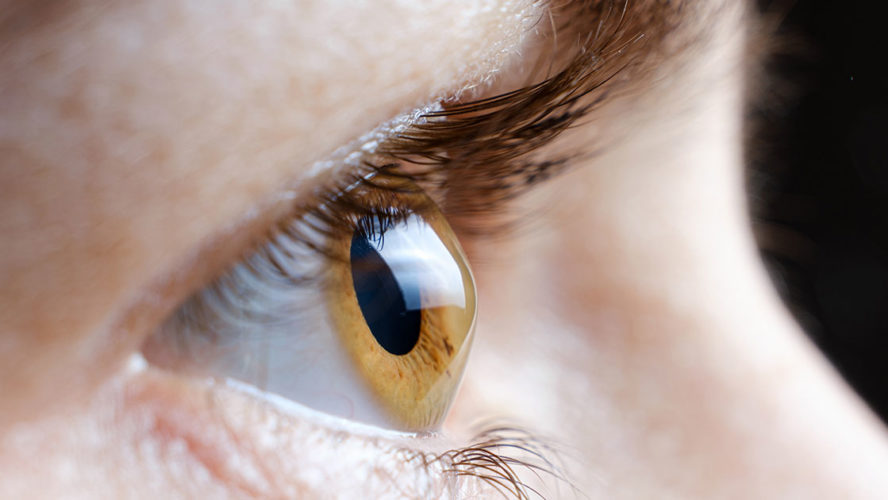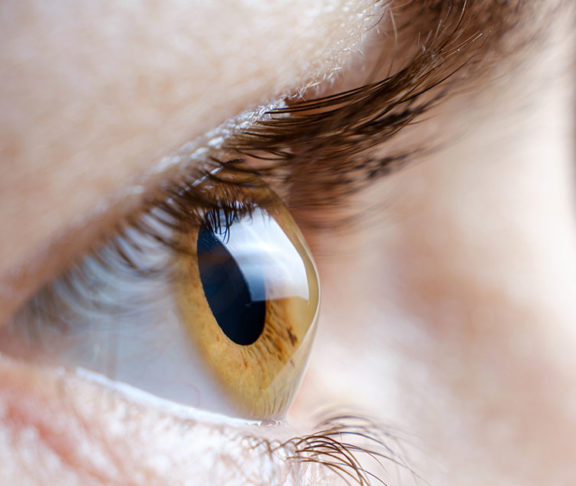Dr. Louise A. Sclafani discusses the causes, symptoms, and treatments for the corneal condition keratoconus, which affects an estimated 1 in 1,000 people worldwide.
What is keratoconus?
Keratoconus is a condition in which the cornea (kerato), the clear tissue that rests over the colored part of the eye, takes on a conical shape. This protrusion of tissue is due to a thinning of the cornea, causing it to bulge forward. Typically, the disease begins in the early teens.
How does this affect my vision?
This change in shape to the front surface of the eye causes irregular astigmatism that cannot be easily corrected by glasses. Patients often report double vision in one eye, halos, glare, ghost images, sensitivity to light, and fatigue. They may go through multiple pairs of glasses before receiving a diagnosis of keratoconus, which can be frustrating.
How is it diagnosed?
In the beginning of the disease, it is often difficult to diagnose with standard equipment. The slit lamp is a microscope to evaluate the corneal health. Because the cornea can look “normal” until later stages, it is best to evaluate with additional tools to make an earlier diagnosis.
Today, most optometrists use sophisticated instruments that accurately detect the curvature and thickness of the cornea (a corneal topographer), and then compare to the normal population. This allows them to see subtle changes and diagnose the disease earlier.
How common is keratoconus?
Keratoconus is much more common than previous studies indicated. A classic registration study conducted in Olmsted County, MN from 1935-1985 indicated that 1 in 2,000 people had keratoconus, but a more recent study from the Netherlands indicated that as many as 1 in 375 people have keratoconus. Throughout the world the numbers vary, but it is estimated that 1 in 1,000 people worldwide have keratoconus.
This increase in the disease may be due to more sophisticated diagnostic tools and environmental variation. There are several systemic conditions that contribute, such as connective tissue disorders, mitral valve-prolapse, and Down syndrome. Some ethnicities are more prone, such as the Arabic and Asian population. Some eye conditions such as floppy eyelid syndrome, allergies, or anything that causes patients to rub their eyes will also increase the risk of keratoconus. However, numerous studies have also revealed that there is a very strong genetic component, and there is now a commercially available genetic test that your eye doctor can perform to see what your risk is to develop this condition.
Is there a cure? Will I go blind?
Unfortunately, there is not a cure, but rest assured that you will not go blind if you have appropriate care. Fortunately, there are many treatment options. Mild disease can be treated with glasses, but most patients benefit from specialty contact lenses at all stages of the continuum of care for keratoconus.
Contact lens designs include custom soft lenses, rigid gas permeable corneal lenses, and hybrid contact lenses that combine a rigid center and a soft skirt. Gaining popularity are rigid scleral contact lenses that rest on the white part of the eye and vault over the diseased corneal tissue. Corneal cross linking, which directs UVA light at the cornea to stiffen the tissue and prevent further protrusion, has been approved in the United States. If the patient does progress to more severe disease — due to scars on the cornea that prevent light from being transmitted, perforation of the cornea, or just intolerance to contact lenses — a corneal transplant can be performed. This is a very common and successful procedure in the United States.
What can I do?
You should schedule routine eye care for you and your children, especially if you are at risk. Children who require prescriptions early in life, have astigmatism, rub their eyes frequently, or have a family history are at risk. Consider genetic testing, seek a specialist in the area through the American Academy of Optometry, and stay updated on the condition through the International Keratoconus Academy and the National Keratoconus Foundation.

